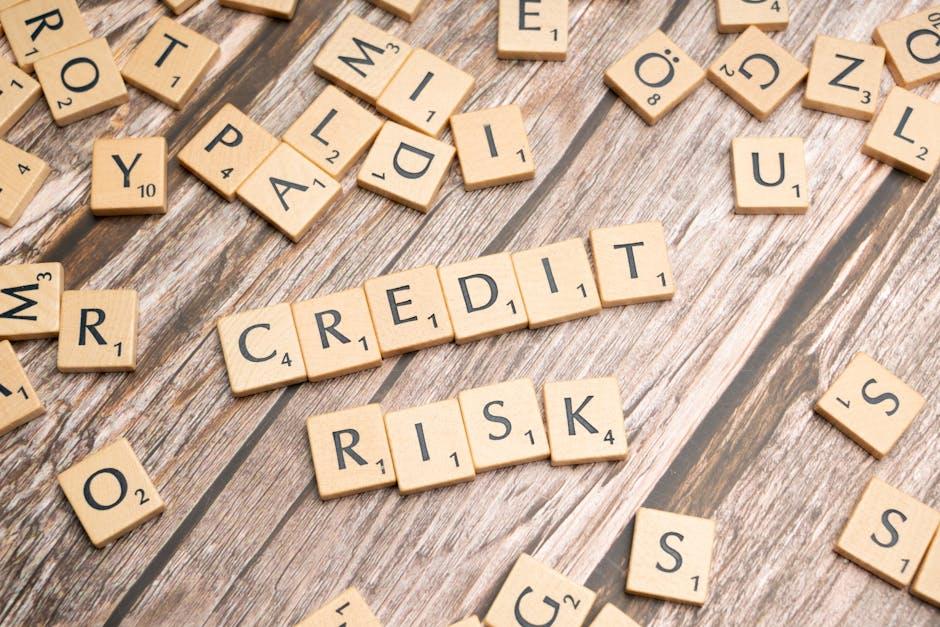In the bustling world of small business, where dreams are crafted into reality, the lifeblood of ambition often flows through the channels of credit. Yet, beneath the surface of every loan agreement lies a complex web of risk and reward, a delicate balance that can spell the difference between prosperity and peril. Understanding credit risk in small business loans is not merely a financial exercise; it is an art form, a strategic dance that requires both precision and intuition. As entrepreneurs navigate the ever-changing landscape of commerce, lenders must peer into the kaleidoscope of potential, discerning the subtle hues of risk that define each unique venture. This article delves into the intricate tapestry of credit risk, unraveling the threads that bind lenders and borrowers in a shared quest for success. Join us as we explore the essential elements of credit risk assessment, equipping you with the insights needed to make informed, confident decisions in the dynamic arena of small business finance.
Evaluating Financial Health Key Indicators for Assessing Small Business Creditworthiness
When assessing the creditworthiness of small businesses, it is crucial to delve into a series of financial health indicators that paint a comprehensive picture of their fiscal stability. Liquidity ratios, such as the current ratio and quick ratio, are fundamental in evaluating a business’s ability to meet its short-term obligations. These ratios provide insight into the firm’s operational efficiency and its capacity to convert assets into cash quickly. Additionally, the debt-to-equity ratio serves as a vital indicator of a company’s financial leverage, revealing the proportion of debt used to finance the business’s assets compared to shareholders’ equity. A high ratio may signal potential risk, whereas a lower ratio typically indicates a more conservative approach to debt management.
Beyond these traditional metrics, it’s essential to consider cash flow analysis as a dynamic measure of financial health. A positive cash flow ensures that a business can sustain operations, invest in growth opportunities, and weather economic downturns. Furthermore, profitability ratios, including the net profit margin and return on assets, provide a lens through which to evaluate a company’s efficiency in generating profits relative to its revenue and assets. Together, these indicators form a robust framework for understanding the financial landscape of small businesses, guiding lenders in making informed decisions about credit risk.

Navigating Market Volatility Strategies for Mitigating Credit Risk in Uncertain Times
In the face of economic uncertainty, small businesses often find themselves grappling with the complexities of credit risk. To effectively navigate market volatility, lenders must adopt strategic approaches that mitigate potential losses. One of the most effective strategies is diversifying the loan portfolio. By spreading risk across various industries and geographic locations, lenders can cushion the impact of localized economic downturns. Stress testing is another critical tool, allowing lenders to simulate adverse economic scenarios and assess their impact on the loan portfolio. This proactive approach helps in identifying vulnerabilities and adjusting lending criteria accordingly.
Furthermore, maintaining a robust credit assessment process is essential. This involves a thorough evaluation of a borrower’s financial health, including cash flow analysis, debt-to-income ratios, and credit history. By employing advanced analytics and machine learning algorithms, lenders can enhance their predictive capabilities, enabling more informed decision-making. Additionally, establishing strong relationships with borrowers can provide valuable insights into their business operations, facilitating early identification of potential risks. In uncertain times, these strategies are not just beneficial—they are imperative for safeguarding financial stability.
Leveraging Technology Innovative Tools for Enhanced Risk Assessment
In the dynamic landscape of small business lending, the integration of cutting-edge technology and innovative tools is revolutionizing how financial institutions assess credit risk. With the advent of artificial intelligence (AI) and machine learning algorithms, lenders can now analyze vast datasets with unprecedented speed and accuracy. These technologies enable the identification of nuanced patterns and correlations that traditional methods might overlook, thus providing a more comprehensive risk profile of potential borrowers. Moreover, AI-driven tools can continuously learn and adapt, enhancing their predictive capabilities over time.
Additionally, blockchain technology offers a transparent and secure method for verifying the financial history of small businesses, minimizing the risk of fraud. Cloud-based platforms facilitate real-time data sharing and collaboration, ensuring that all stakeholders have access to the most current information. Key features of these technological advancements include:
- Automated data analysis: Streamlines the assessment process by quickly processing large volumes of data.
- Enhanced predictive analytics: Provides deeper insights into borrower behavior and potential default risks.
- Improved transparency: Blockchain ensures that all transactions are recorded and verifiable.
- Real-time updates: Cloud solutions offer up-to-date information for more informed decision-making.
By leveraging these innovative tools, lenders can not only enhance their risk assessment processes but also make more informed lending decisions, ultimately fostering a more robust and resilient financial ecosystem for small businesses.
Crafting a Robust Credit Policy Essential Guidelines for Lenders to Minimize Default Rates
In the realm of small business lending, the development of a comprehensive credit policy is crucial for mitigating default risks. Lenders must prioritize the establishment of clear criteria that delineate the boundaries of acceptable risk. This involves evaluating the borrower’s creditworthiness through meticulous analysis of financial statements, credit scores, and cash flow projections. Additionally, lenders should consider the economic environment and industry-specific risks that may impact the borrower’s ability to repay.
Key components of a robust credit policy include:
- Credit Limits: Define maximum exposure levels for different borrower categories to prevent over-lending.
- Collateral Requirements: Establish guidelines for acceptable collateral to secure loans and reduce potential losses.
- Risk Assessment Protocols: Implement a structured process for evaluating borrower risk profiles, incorporating both quantitative and qualitative factors.
- Monitoring and Review: Regularly assess loan performance and borrower financial health to identify early warning signs of default.
By adhering to these guidelines, lenders can craft a credit policy that not only safeguards their interests but also supports the sustainable growth of small businesses.





